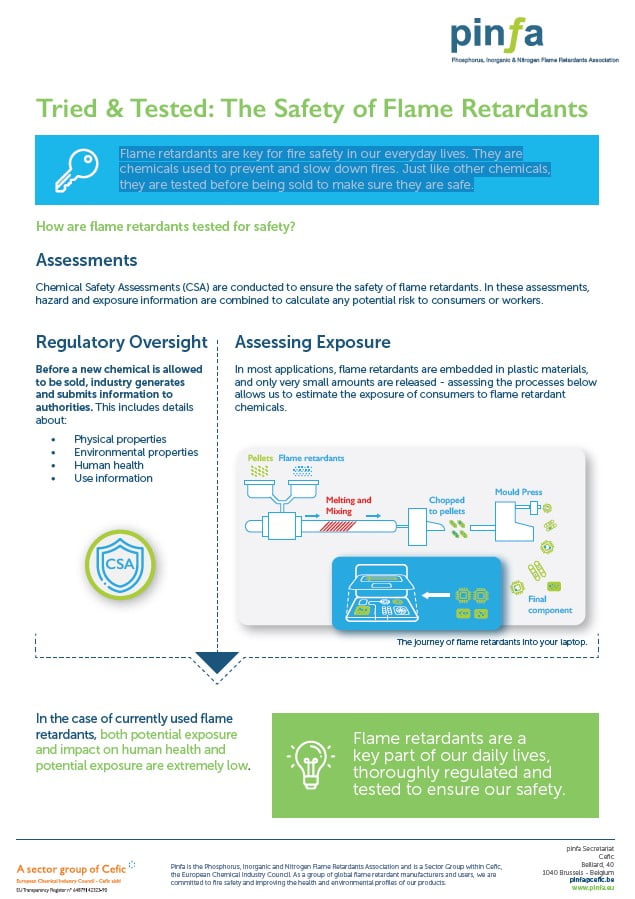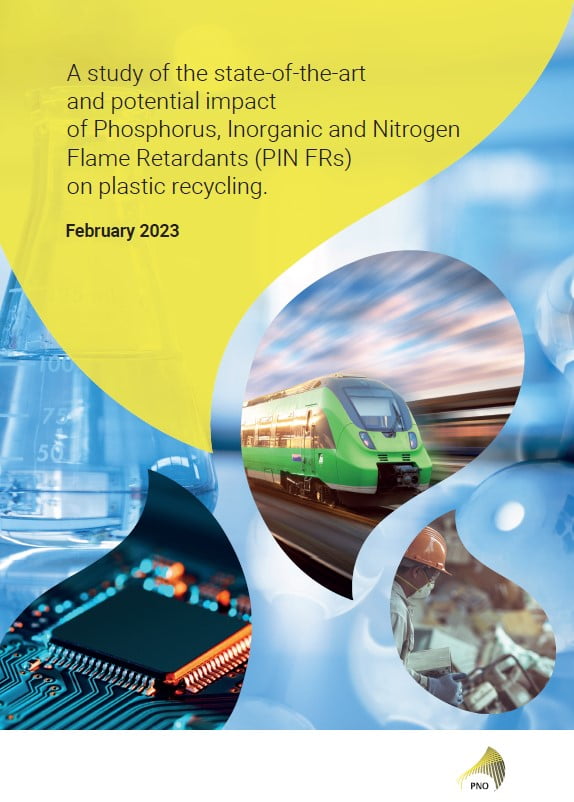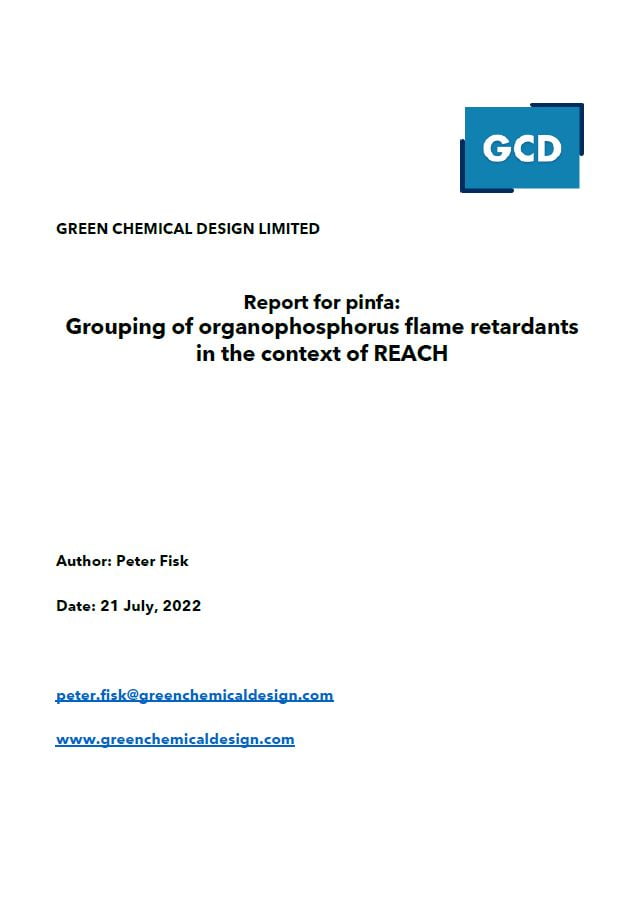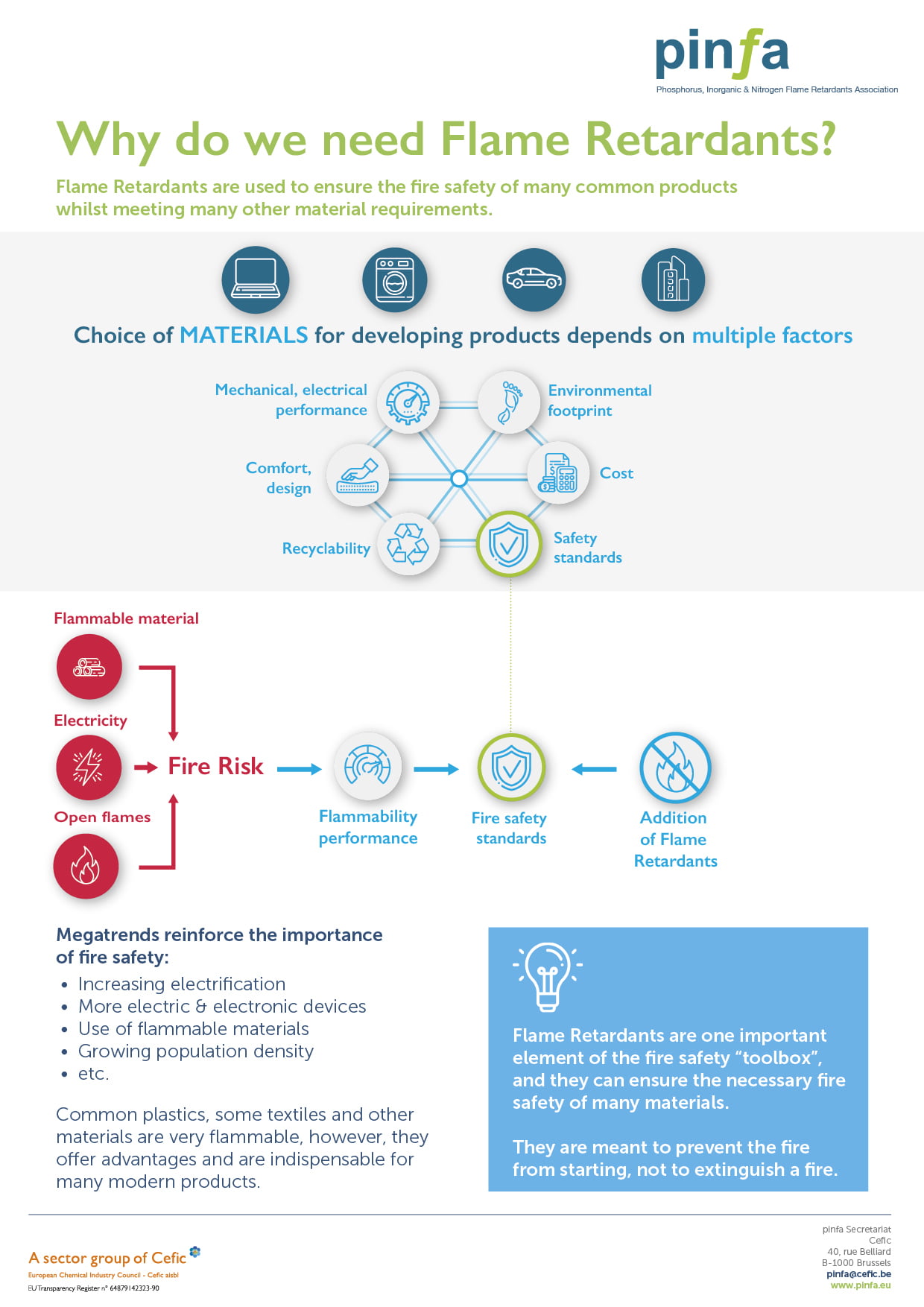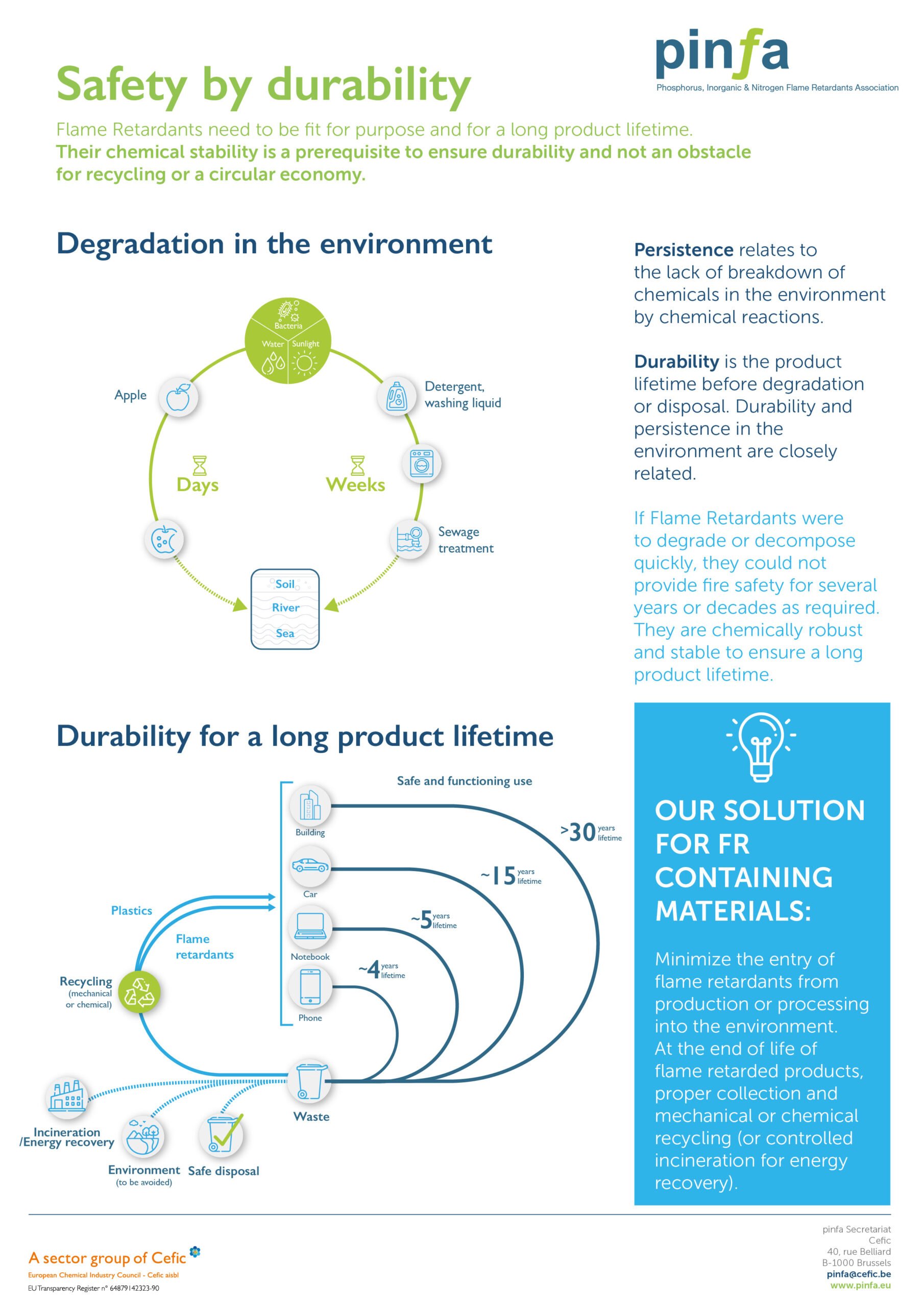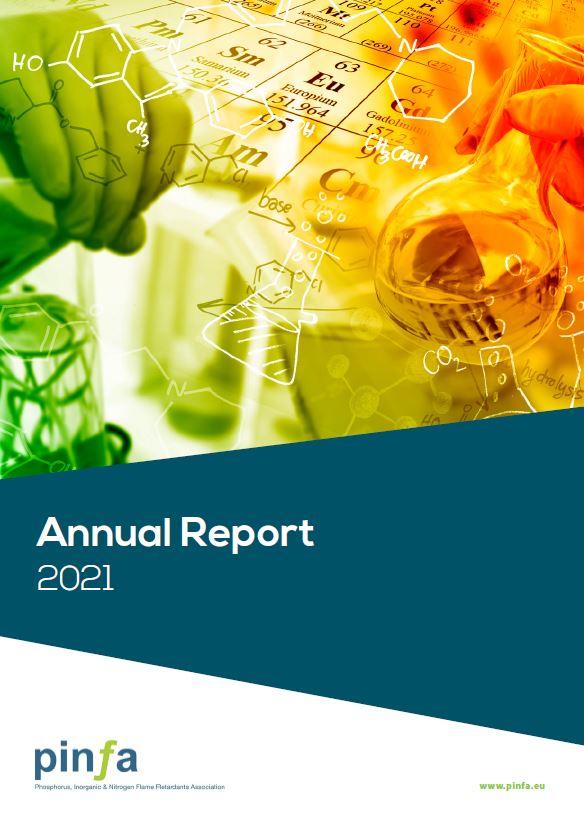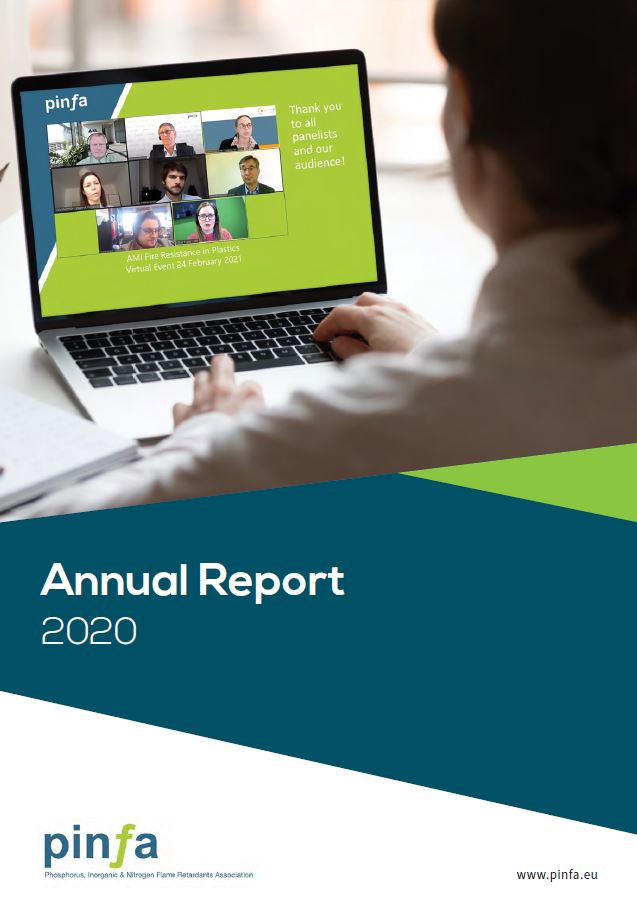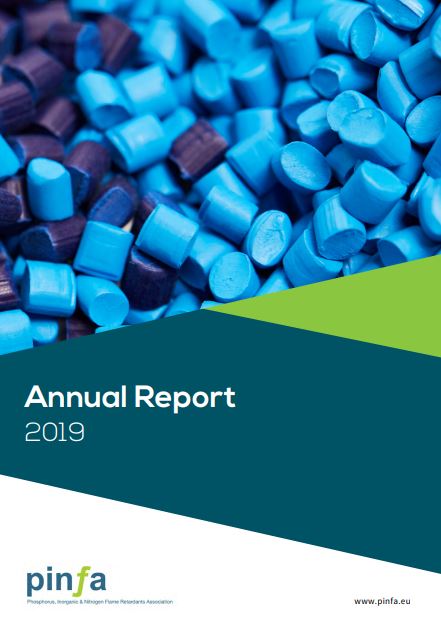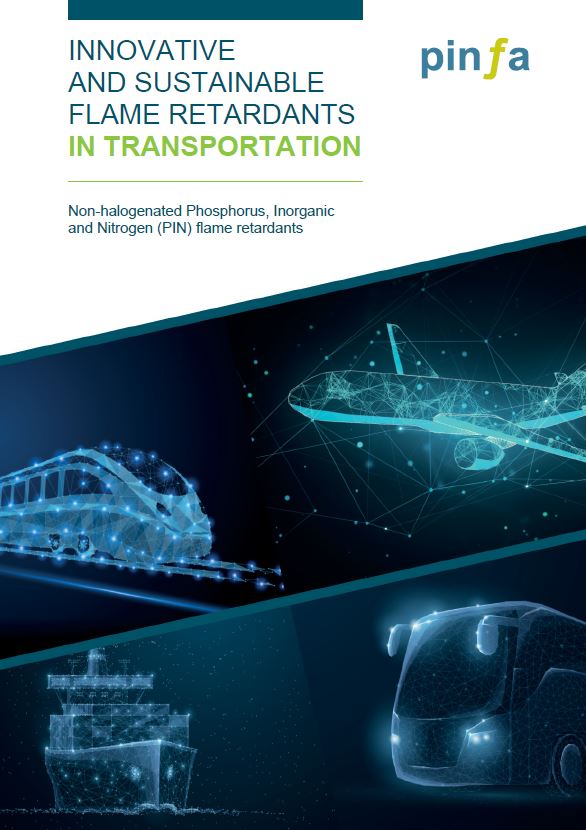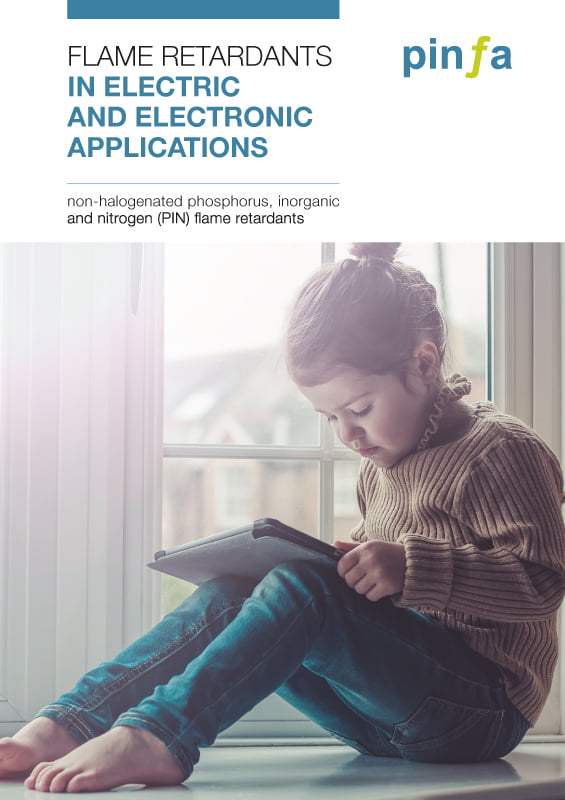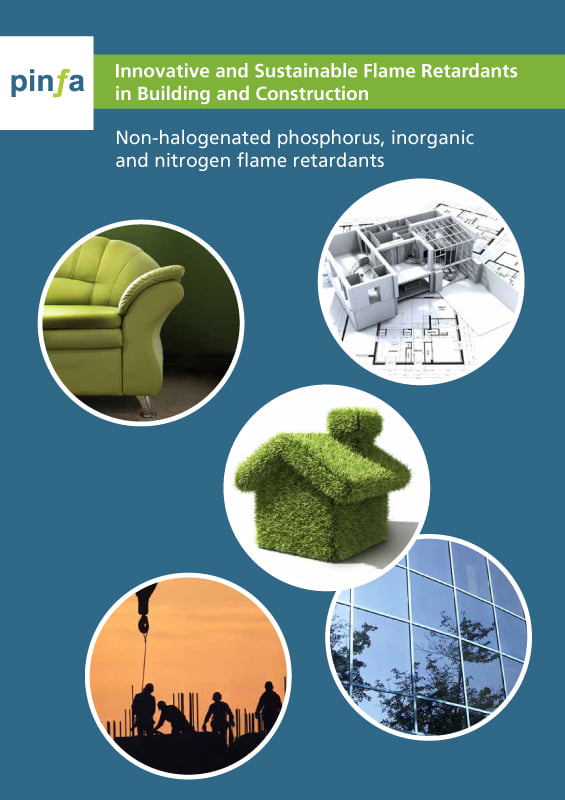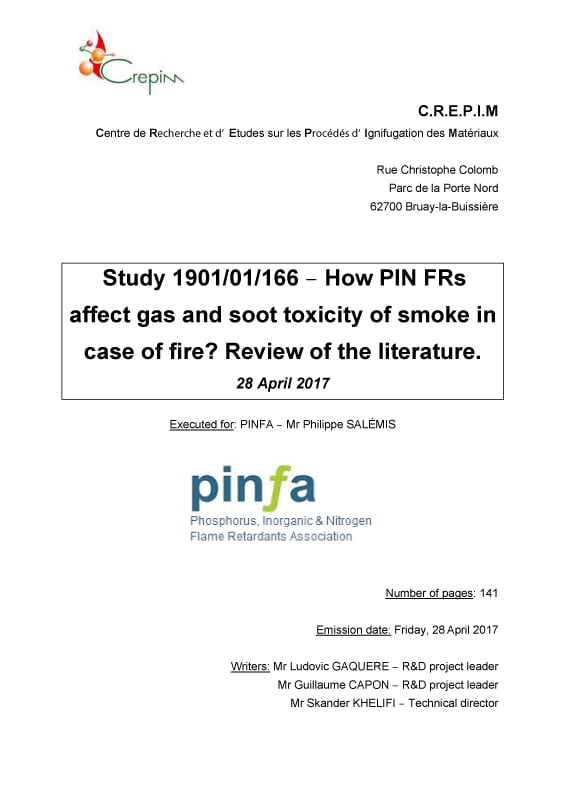BROCHURES & PUBLICATIONS
Safe and Sustainable Flame Retardants for Fire safety
Fire safety is integral to Europe’s sustainability goals, and to ensure a safe green and digital transition. Flame retardants have a key role to play in this, and to meet tomorrow’s challenges they must be sustainable while delivering optimal fire resistance in materials and technologies.
Tried & Tested: The Safety of Flame Retardants
Flame retardants are key for fire safety in our everyday lives. They are chemicals used to prevent and slow down fires. Just like other chemicals, they are tested before being sold to make sure they are safe.
Pinfa Annual Report 2022
After dealing with many Covid-19 related restrictions in 2020
and 2021, the year 2022 brought back some degree of normality
for pinfa – we could go back to in-person meetings in addition
to the many online meetings we have. Our general assembly
in Düsseldorf in May was certainly a highlight, where people
relished the opportunity for “live” interaction and networking.
PIN Flame Retardants and Recycling
Fire safety is an essential prerequisite for societal use of advanced materials, for example in renewable energy, batteries and information technologies, or for green materials such as wood, natural fibres or recycled cellulose insulation materials.
Flame retardants are designed to durably provide fire safety throughout products’ lifetimes, which can be decades for construction materials. They should also be compatible with safe recycling at the end of this lifetime.
A study of the state-of-the-art and potential impact of Phosphorus, Inorganic and Nitrogen Flame Retardants (PIN FRs) on plastic recycling.
Study by PNO for pinfa analyses development opportunities and data needs for PIN flame retardants in plastics recycling. Nearly 100 publications and patents were analysed, and six research and industry experts interviewed. There is today very little published information on the impacts and fate of FRs in different plastics recycling processes (mechanical, chemical-solvent, chemical-pyrolysis)…
Report for pinfa: Grouping of organophosphorus flame retardants in the context of REACH
pinfa is engaged in all the issues arising from the EU’s Chemical Strategy for Sustainability. One of them is the content of the draft Chemical Restriction roadmap. In this context where the Restrictions Roadmap under the Chemicals Strategy for Sustainability (CSS) has included a grouping approach to substances registered under the REACH Regulation…Author : P. Fisk (Green Chemical Design Ltd)
Why do we need Flame Retardants?
Flame Retardants are used to ensure the fire safety of many common products whilst meeting many other material requirements.
Safety by durability
Flame Retardants need to be fit for purpose and for a long product lifetime.
Their chemical stability is a prerequisite to ensure durability and not an obstacle
for recycling or a circular economy.
Pinfa Annual Report 2021
pinfa was steadfast in its commitment to maintain high fire safety standards across the world, which minimise the risk of fire to the general public, by continuing to improve the environmental and health profile of our flame retardant products. This mission remains especially important to ensure the continuity of progress in fire safety awareness, safer design and fire resistance materials.We further grew our PIN FR family and proudly welcome on board the new members Luna, Sibelco,Asahi Kasei and RioTinto!
Pinfa Annual Report 2020
A year like no other sums up 2020. We all witnessed an unprecedented global health pandemic bring life as we know it to a grounding halt. In spite of the extraordinary difficulties, the world community showed unparalleled strength and resilience and mended the broken seams, as best as they could. As part of the chemical industry, a designated essential sector in the fight against COVID-19, we’re proud of how pinfa member companies joined efforts in their local communities and regions, suppling
disinfectants, masks and a helping hand when needed most. In line with its mission, pinfa was steadfast in its commitment to maintain high fire safety standards across the world and standards which minimize the risk of fire to the general public by continuing to improve the environmental and health profile of flame retardant products.
Pinfa Annual Report 2019
2019 saw unprecedented technological breakthroughs, such as successful landings of reusable unmanned rockets, eradication of 2 of 3 polio stems or the very first observable image of a black hole. Prof. Michio Kaku often reminds us that we now have more computing power in our backpocket than the NASA had when men were first sent to the Moon … Yet, despite this profound progress, fire keeps being a threat to our society and lifestyles: when Notre-Dame caught fire earlier this year, nothing could be done to stop the flames from destroying the eightcenturies old monument. The easiest fire to quench is the one that never sparkles; to achieve that, we need to promote greater awareness of fire safety, develop safer designs and rely on fire-resistant materials. pinfa is proud to be part of the solution for a safer world.
Pinfa Annual Report 2018
Throughout 2018, pinfa has maintained a high level of activities and commitment to promote PIN flame retardants in Europe and beyond. Indeed, 2018 is a watershed because it has been the first year with operations on three continents: in Europe where it all started in 2009, in North America where it grew in 2012 and now in China, where the thriving market offers many growth opportunities.
Innovative & Sustainable Flame Retardants in Transportation
Transport vehicles like aeroplanes, ships, trains, buses, and cars use a large number of flammable materials and are subject to fire risks, pinfa has compiled this 53 page guide to how phosphorus, inorganic and nitrogen flame retardant technologies (PIN) can contribute to the safety of materials and vehicles. A whole toolbox of halogen-free chemistries is now available providing fire safety solutions for polymers for electrical and electronic components, structural parts, interior panels, seats, cables, carpets, decorative and upholstery textiles, insulation foams. Fire tests applicable in automotive, railway, shipping and aviation are presented, as are innovation and future transport trends, including lightweight construction, electric vehicles, bioplastics, fibre reinforced polymers, comfort and infotainment.
Innovative Flame Retardants in Electronics & Electrical Applications
pinfa presentation of halogen-free flame retardant solutions (FRs) for key electronics and electrical components including housings, cables, connectors and switches. Standards development and fire tests for E&E materials are outlined and the mechanisms of different types of HFFR compounds is presented, including processability, mechanical and electrical properties of flame retarded materials, fire resistance, future trends and innovation, and environment questions. Applications covered are wire and cable, electric enclosures, electric installations and components and printed wiring boards PWR (printed circuit boards PCB).
Innovative & Sustainable Flame Retardants in Building and Construction
Presentation of non-halogenated PIN flame retardant solutions for different materials and applications in building and construction, including standards and testing of resistance to fire, fire classification and fire performance of building materials, health and environment, manufacturing processes. Building materials are becoming increasingly complex, energy efficient and comfortable, but are also increasingly flammable, so that flame retardants are needed to prevent fire starting or stop fires spreading. This 56 page pinfa flame retardancy guide covers fire safety of profiles and composites (thermoplastics, thermosets), cables (PVC, HFFR), films and sheets, insulation materials (polyurethane foams, polystyrenes, polyolefins, natural insulation materials), building textiles, reactive coatings and sealants, flooring, waterproofing membranes. Edited by Alexander B. Morgan.
How PIN FRs affect gas and soot toxicity of smoke in case of fire? Review of the literature
CREPIM’s litterature survey commissionned by pinfa. An initial study by CREPIM France, for pinfa, has collated and assessed available scientific literature on how PIN FRs affect fire smoke toxicity. 135 relevant publications were identified, of which 22 were found to contain useable information and data. 140 pages – April 2017

